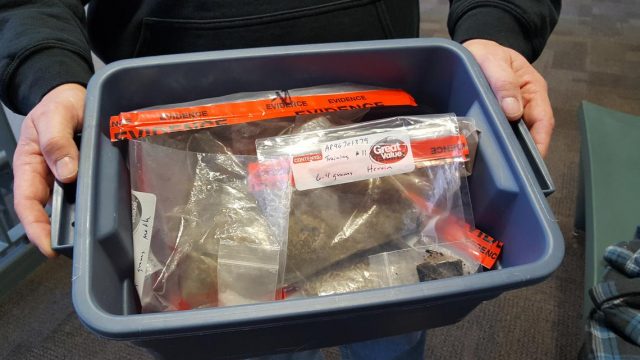Prohibition Is a Crock: Americans (Probably) Spend as Much on Recreational Drugs as They Do on Booze

A newly-issued Rand Corporation report (see below) indicates that Americans spent almost $150 billion on illegal drugs in 2016.
To put that into perspective, Americans spent roughly $227 billion on alcohol the same year.
The two numbers are seemingly far apart, until you realize the limitations of the drugs metric.
For one thing, Rand only looked at four types of drugs: Marijuana (including sales sanctioned by states which have legalized it), heroin, methamphetamine and cocaine. That’s a big chunk of American drug use, but hardly a comprehensive picture. Psychedelics aren’t included, nor are drugs like MDMA.
Even if we excise state-legal marijuana sales (though they should be included since it’s technically still prohibited under federal law), we still have to account for probable under-reporting of use. It’s not like we can get drug dealers to file sales reports, and some drugs like heroin are notoriously difficult to track.
The actual dollar amount spent by drug users is no doubt significantly higher than what Rand is quantifying.
[mks_pullquote align=”right” width=”300″ size=”24″ bg_color=”#ffffff” txt_color=”#000000″]We’re arresting a lot of people, sure, and seizing a lot of drugs. Yet in the aggregate all that does is drive up the price for Americans who can, for the most part, get the drugs they want when they want them.[/mks_pullquote]
Still, that drug sales would even approach what Americans spend on alcohol is remarkable. Especially when we consider that the market for booze is significantly larger.
Drinkers outnumber drug users 3 – 1 in last-year consumption, and 5 – 1 in the past-month metric.
Why, then, are the sales figures (probably) near parity?
One word: Prohibition.
Alcohol, though heavily taxed and regulated by the federal and various state governments, is a legal product. It can be marketed and sold openly. Drugs cannot be. They must be manufactured, distributed, sold, and used in secret.
That drives up the cost.
It also drives up the profit margins for the criminals who service this thriving black market.
Thriving despite the billions upon billions of dollars spent every year on trying to stop the manufacture, distribution, sale, and use of these drugs.
Drug prohibition is working about as well as alcohol prohibition did. That failed policy never really stopped anyone from drinking. It did, however, create a situation where the alcohol was more dangerous even as its sale enriched violent and notorious criminals like Al Capone.
We’re pretty much doing the same with drugs.
It’s not an exactly equivalent situation. Alcohol is something which, when used responsibly, has few ill side effects. It’s hard to make that argument about meth, as one example. Also more liberalized drug policy isn’t exactly the panacea for policy quandaries like America’s embarrassing incarceration rates. As Fordham University School of Law professor John Pfaff wrote recently, the number of people incarcerated for drugs is actually a relatively small sliver of our nation’s prison population: “In state prisons, which hold nearly 90 percent of the nation’s 1.5 million prisoners, almost 95 percent of inmates serving long sentences have been convicted of serious violence, not drugs; about half or more of such inmates were convicted of murder or manslaughter.”
But that doesn’t exactly excuse the futility of the generational “war on drugs” we’ve been waging. We’re arresting a lot of people, sure, and seizing a lot of drugs. Yet in the aggregate all that does is drive up the price for Americans who can, for the most part, get the drugs they want when they want them.
[scribd id=422533861 key=key-e5exB6cM56TDiPWPngt2 mode=scroll]




